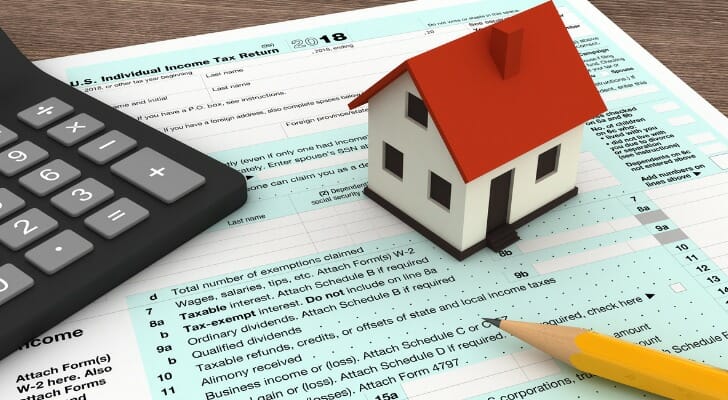The Section 121 Exclusion is an IRS rule that allows you to exclude from taxable income a gain of up to $250,000 from the sale of your principal residence. 1 A couple filing a joint return gets to exclude up to $500,000. The exclusion gets its name from the part of the Internal Revenue Code that allows it. To get the exclusion, a taxpayer must own and use the home as their main residence for a period adding up to two years out of the five years before it is sold.
A financial advisor can help ensure you’re getting all the credits, exemptions and deductions you’re entitled to.
Section 121 Exclusion Basics
Section 121 Exclusion, also known as the principal residence tax exclusion, lets people who sell their primary homes put the proceeds from the sale into another home without having to pay taxes on the gain. There is no requirement that proceeds from a home sale be used to purchase a second home to claim the exclusion.
However, the exclusion is tailored to deny similar tax benefits to investors who buy homes for rental purposes. Likewise, people who sell secondary residences such as vacation homes can’t use the exclusion. It’s also generally not available to people who frequently buy and sell primary homes. Further, property used in a trade or business can’t benefit from the exclusion either. Finally, U.S. taxpayers also qualify for the principal residence tax exclusion if the principal residence is outside the United States.
The IRS requires a taxpayer who gets a Form 1099-S reporting proceeds from real estate transactions to report the gain from a sale on his or her tax return. That’s still the case even if the gain is excludable under Section 121. Taxpayers use Schedule D, part of Form 1040, and Form 8949 to report gains on these sales.
Ownership and Use Test for Section 121 Exclusions
The main restriction on using the Section 121 Exclusion is the ownership and use test. This requires that the taxpayer has owned the home and used it as a primary residence for at least 24 months out of the previous 60 months. The 60-month period ends on the date the home is sold. The 24 months do not have to be consecutive.
For instance, a taxpayer could qualify for the exemption if the taxpayer lived in the home for a year, moved out for three years, and then used it again as a primary residence the last year. Also, the ownership and use tests can be met during different two-year periods.
A homeowner who uses the home for business purposes, such as rental property, for part of the preceding five years, would only be able to exclude a portion of the gain, however. The amount of the gain that can be excluded is determined by the proportion of time the home was used for business purposes. For a taxpayer who lived in a home for two of the five years and rented it for three of the five years, for example, three-fifths of the gain on the sale could not be excluded. That portion of the gain would be treated as taxable income.
Another limitation of the exclusion is that the taxpayer can only use it every two years. If a taxpayer sold a home and took the exclusion at any time during the two years before the date of the home’s sale, the exclusion wouldn’t apply.
Special Exemptions
Understanding your tax liability requires understanding some special cases when a home seller can use the exclusion test more liberally. For instance, when a home seller has had a change of employment or had health issues or experienced other unforeseen circumstances.
There is also a specific provision for taxpayers or their spouses who are serving in the military and have been stationed for more than 90 days more than 50 miles from home or ordered to live in government housing. In these cases, the taxpayer can elect to suspend the usual five-year period for up to 10 years. A similar exemption applies to taxpayers or spouses in the government foreign service or intelligence community.
How Partial Exclusions Work Under Section 121

Some taxpayers may qualify for a reduced Section 121 exclusion if they do not meet the full two-year ownership and use requirement. The IRS allows a partial capital gains exemption when the primary reason for the home sale is a change in employment, health issues or other unforeseen circumstances. The reduced exclusion lets taxpayers exclude a portion of the $250,000 or $500,000 limit based on how long they lived in the home.
A partial exclusion is calculated by comparing the time the taxpayer owned and used the home as a primary residence to the full two-year requirement. The allowed exclusion is the same proportion of the maximum exclusion. For example, if a taxpayer lived in a home for one year instead of two and sold the home due to a qualifying reason, they may be able to exclude up to half of the usual limit. This would mean up to $125,000 for a single filer or up to $250,000 for a joint filer.
The IRS defines qualifying reasons narrowly. A change in employment must involve a new job that significantly increases the distance between home and workplace. A move for health reasons must be recommended by a doctor. Unforeseen circumstances can include events such as natural disasters, death, divorce or property damage. Each situation must meet IRS criteria to qualify for a partial exclusion.
A partial exclusion can help reduce tax liability even when the homeowner falls short of the standard two-year test. Taxpayers who believe they may qualify for a reduced exclusion may want to review the IRS rules carefully or consult a tax professional to make sure they apply the calculation correctly.
Bottom Line

Using the Section 121 Exclusion can significantly reduce taxes to taxpayers who sell a principal residence and allow them to avoid paying the capital gains tax when selling their house. Section 121 excludes income up to $250,000 for an individual taxpayer and $500,000 for a couple filing jointly. The exclusion is only for people who own and use a property as their primary residence for two of the five years before the sale. Houses cannot be used as real estate investment properties, rent houses, second and vacation homes, or business properties. The exclusion can only be used once every two years.
Tips on Taxes
- To make sure you aren’t missing out on any money-saving tax moves, consider talking to a financial advisor. Finding a financial advisor doesn’t have to be hard. SmartAsset’s free tool matches you with up to three vetted financial advisors who serve your area, and you can have a free introductory call with your advisor matches to decide which one you feel is right for you. If you’re ready to find an advisor who can help you achieve your financial goals, get started now.
- The federal government taxes income in America, most state governments and many local governments. The federal income tax bracket system is progressive, so the rate of taxation increases as income increases. Here’s a free federal income tax calculator that will give you a good idea of what you’ll owe Washington.
Photo credit: ©iStock.com/alexsl, ©iStock.com/PeopleImages, ©iStock.com/valentinrussanov
Article Sources
All articles are reviewed and updated by SmartAsset’s fact-checkers for accuracy. Visit our Editorial Policy for more details on our overall journalistic standards.
- “Topic No. 701, Sale of Your Home | Internal Revenue Service.” Home, https://www.irs.gov/taxtopics/tc701. Accessed 12 Dec. 2025.
